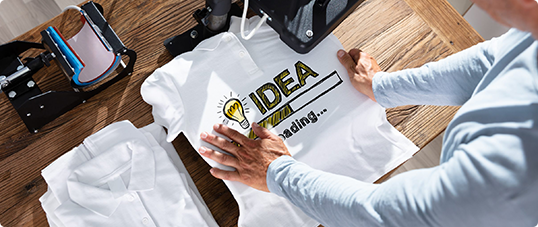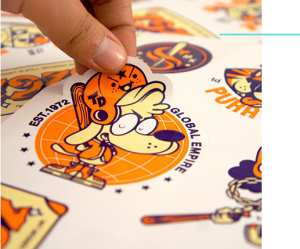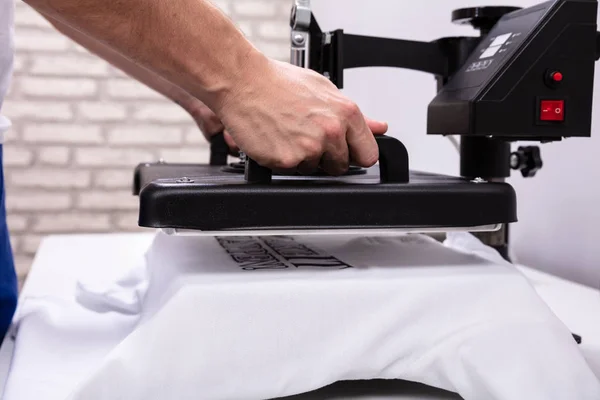Choose the Right DTF Printing Equipment in 2024 | Best Tips

DTF (Direct-To-Film) printing has become an innovative method in the printing industry for transferring designs onto a variety of substrates with remarkable accuracy and vibrancy. It’s a method where designs are printed onto a special film and then transferred onto different things like clothes or items. It’s become quite popular because it allows for colorful and detailed designs on various surfaces.
But here’s the thing: picking the right DTF printing equipment can be tough. Many people end up making mistakes when they’re trying to choose the right stuff. And getting it wrong can affect how good your prints look and how well your printing business runs.
That’s why it’s super important to get the equipment right. It’s like building a strong foundation for a house – if you get it right, everything else falls into place smoothly. But with so many options out there, it can feel overwhelming, especially if you’re new to DTF printing.
So, in this guide, we’re going to break it down for you. We’ll talk about the common mistakes people make, why it’s important to pick the right equipment, and how this guide can help you navigate through the confusion. Whether you’re a seasoned pro or just starting out, we’ve got you covered with all the information you need to make the best choices for your DTF printing setup.
What Are Your Printing Needs?
To choose the best DTF printing equipment for your needs, you must first take a step back and determine what you need. This involves two important things: understanding how much you’ll be printing and determining what types of items you’ll be printing on.
Assessing Printing Volume
Consider how much printing you expect to do on a regular basis. Are you planning to produce a high volume of prints every day, or will your printing needs be more moderate or sporadic? Understanding your printing volume will help you choose equipment that can handle your workload efficiently without causing bottlenecks or delays.
For example, if you anticipate a high volume of printing, you’ll want to invest in equipment that offers fast print speeds and reliable performance to keep up with demand. On the other hand, if your printing volume is lower, you may prioritize other factors such as versatility or cost-effectiveness.
Your Target Substrates
Next, think about the types of items you’ll be printing on, also known as substrates. These could include garments like t-shirts or hoodies, accessories like bags or hats, or even promotional items like mugs or phone cases. Each substrate may have unique characteristics that influence your choice of printing equipment.
For instance, if you plan to print on a variety of substrates with different shapes and sizes, you’ll need equipment that offers flexibility and compatibility with various materials. Alternatively, if you specialize in printing on a specific type of substrate, you can focus on equipment optimized for that particular material.
Types of DTF Printing Equipment
When it comes to DTF printing, the primary equipment you’ll need is a DTF printer. This machine is the first thing you need to transfer your designs onto the printing film, which is then transferred onto the desired substrate. Let’s talk about the key factors to consider when selecting a DTF printer:
DTF Printer
Print Width and Resolution
One of the first things to look at when choosing a DTF printer is its print width and resolution capabilities. Print width refers to the maximum width of the prints the printer can produce, while resolution determines the level of detail and sharpness in the prints.
For larger designs or printing on wide substrates like banners or large garments, you’ll need a printer with a wider print width to accommodate your designs without scaling or cropping. Additionally, higher-resolution printers are capable of reproducing finer details and smoother gradients, resulting in higher-quality prints.
Ink Compatibility
Another important factor to consider is ink compatibility. DTF printers typically use specialized DTF inks formulated for optimal adhesion and vibrancy on various substrates. Ensure that the printer you choose is compatible with the specific type of DTF ink you plan to use.
Different DTF inks may be designed for different types of substrates, such as cotton, polyester, or blends. Additionally, consider factors like color gamut, washability, and durability when selecting DTF inks for your printer.
Additional Features
Beyond print width, resolution, and ink compatibility, it’s worth exploring the additional features offered by DTF printers. These may include:
- Automated maintenance systems: Some printers come with automated cleaning and maintenance functions to streamline upkeep and ensure consistent print quality.
- Adjustable print heads: Printers with adjustable print heads allow for precise control over ink deposition, resulting in sharper prints and reduced ink consumption.
- Multi-color printing capabilities: If you plan to produce prints with multiple colors or complex designs, look for printers capable of printing multiple colors in a single pass to minimize production time.
Heat Press
In addition to a DTF printer, a heat press is an essential piece of equipment for transferring the printed design from the film onto the substrate.
Types of Heat Presses
There are several types of heat presses available, each with its own advantages and applications:
- Clamshell heat presses: These are among the most common types of heat presses and feature a hinged top plate that opens and closes like a clamshell. They are typically compact and easy to use, making them suitable for small spaces or home-based operations.
- Swing-away heat presses: Swing-away heat presses feature a swinging upper platen that moves away from the lower platen, providing easier access to the work area. This design allows for greater precision and control, making them ideal for thicker substrates or items that require precise alignment.
- Drawer heat presses: Drawer-style heat presses have a unique design where the lower platen slides out like a drawer, allowing for easier loading and unloading of substrates. They are particularly well-suited for printing on garments or items with uneven surfaces.
Size and Format Compatibility
Consider the following factors:
Platen size: Choose a heat press with a platen size that comfortably accommodates your largest substrate size. This ensures that you can effectively transfer designs onto various items without limitations.
Format compatibility: Some heat presses are designed for specific formats, such as flat items like t-shirts or three-dimensional objects like caps or mugs. Ensure that the heat press you select is compatible with the formats you intend to print on.
Heat and Pressure Control Features
Temperature and pressure are critical factors in achieving successful transfers with DTF printing. Look for heat presses that offer:
- Precise temperature control: The ability to adjust and maintain precise temperature settings ensures proper ink curing and adhesion.
- Adjustable pressure settings: Heat presses with adjustable pressure settings allow you to tailor the pressure applied during the transfer process to the specific requirements of your substrates.
- Even heat distribution: A heat press with even heat distribution across the platen helps ensure consistent results and prevents uneven curing or transfer.
Considerations for DTF Ink and Film
The compatibility of DTF ink with both your printer and the substrate you’ll be printing on is paramount for successful transfers. Here’s what to consider:
- Printer compatibility: Ensure that the DTF ink you choose is compatible with your specific DTF printer model. Different printers may have varying ink requirements and formulations, so it’s essential to use ink that is recommended by the manufacturer for optimal performance and reliability.
- Substrate compatibility: Consider the type of substrate you’ll be printing on, whether it’s cotton, polyester, blends, or other materials. Choose DTF ink formulations that are designed to adhere well to your chosen substrate and provide vibrant, long-lasting prints.
- Color options: DTF inks are available in a wide range of colors, including CMYK (cyan, magenta, yellow, black) as well as specialty colors like white and metallics. Select ink colors that suit your design requirements and offer the desired color accuracy and vibrancy.
Film Characteristics
The printing film serves as the carrier for your design during the transfer process, so its characteristics play a very important role in the quality and durability of the final print. Consider the following film characteristics:
- Adhesion: Choose DTF printing films with excellent adhesive properties to ensure proper transfer and adherence to the substrate. Films with strong adhesion help prevent issues like ink bleeding or incomplete transfers.
- Stretchability: Some substrates, particularly fabrics, may require printing films with stretchable properties to accommodate the material’s elasticity without distorting the design. Look for films specifically designed for stretchable applications to achieve optimal results on flexible substrates.
- Thickness and durability: Go for printing films that strike a balance between thickness and durability. Thicker films offer greater durability and resistance to wear and tear, while thinner films may provide better flexibility and conformability to uneven surfaces.
Different DTF ink formulations may require specific curing methods to ensure proper ink adhesion and durability. Consider the curing requirements of the DTF ink you’re using and ensure compatibility with your chosen curing method, whether it’s heat curing, UV curing, or other techniques.
Evaluate Cost and Budget
When you’re getting into DTF printing, it’s really important to think about the costs involved. That means looking at how much you’ll spend upfront and how much you’ll need to keep things running smoothly over time. You’ve got to consider stuff like the price of ink and film, as well as things like maintenance and repairs. It’s all about making sure you’ve got enough money set aside to keep your DTF printing business going strong in the long run.
DTF printers vary widely in cost depending on factors such as brand, model, features, and capabilities. On average, you can expect to invest anywhere from a few thousand dollars to tens of thousands of dollars in a DTF printer. Entry-level or smaller format DTF printers may be available at the lower end of this price range, while larger format or industrial-grade printers with advanced features command higher prices.
For individuals or small businesses just starting out with DTF printing, a more affordable entry-level printer may be sufficient to meet their needs. These printers typically offer basic functionality and may have limitations in terms of print width, resolution, and production capacity. However, they can still produce high-quality prints suitable for small-scale operations or occasional use.
Conclusion
To sum up, choosing the right DTF printing equipment in 2024 boils down to understanding what you need and making smart decisions. By following the important points outlined in this guide, you can pick equipment that fits your printing goals.
Whether you’re just starting out or looking to upgrade, it’s important to consider factors like your printing volume, the types of items you’ll be printing on, and your budget. With the right equipment in hand, you’ll be well-equipped to dive into the world of DTF printing and unleash your creativity.
If you are just starting out, SpeedE Transfers has got you covered! We’re your one-stop shop for all things DTF with a wide range of products to meet your printing needs. From high-quality print films to convenient gang sheets, we’ve got everything you need to take your designs to the next level.


